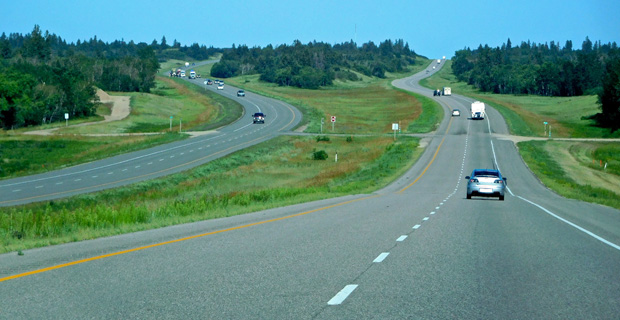Rethinking Lifestyle
Time to Save Gas

There is an additive, little known by most people, that can reduce your car’s fuel consumption by 20% or more. It isn’t new either – back in the early days of the automobile, fuel consumption below 5.0 L/100km was common because of this additive. (Today, an average compact car gets 9.5 L/100km; and a typical SUV: 13.3) Its supply is strictly limited, yet every driver still has access to the same amount as drivers of the past, at no cost. No engine modifications are necessary, and the additive is 100% non-polluting. Too good to be true? Well, kind of. If you haven’t guessed what this miracle additive is, here’s a clue: You probably misread the title of this article.
That’s right. You can save gas by simply adding time to your trip. Slower speeds significantly reduce the resistance your vehicle experiences, and therefore the gas needed to power it. Wind resistance (the friction of air against your car) increases exponentially with speed. That is to say, doubling your speed increases the drag four times (two squared). When you start accelerating your car, fuel economy reaches its maximum as you approach 50km/hr. Beyond 65km/hr, your fuel economy drops exponentially as you push harder and harder against a headwind that you yourself are creating. Natural Resources Canada identifies the “sweet spot” of efficiency for most vehicles as being between 50 and 80 km/hr, and points out that: “At 120 km/h, a vehicle uses about 20 percent more fuel than at 100 km/h. On a 25-km trip, this spike in speed – and fuel consumption – would cut just two minutes from your travel time.”
It’s interesting to consider that in early 1950s Europe, the Citroen 2CV achieved between 4.0 – 5.0L/100km with engine technology vastly inferior to today’s. Compare that with a 2017 Smart ForTwo, which today is rated at only 6.7L/100km. How is it possible that despite almost 70 years of technological progress, our most efficient cars are only now beginning to approach the efficiencies of the past? Two reasons: Weight and speed. Today’s vehicles are loaded with luxury features, sprawling cabins, and high-powered engines that are required to push them at the high (and dangerous) speeds we’ve become accustomed to. At modern highway speeds, our vehicles are 1300-2500kg armoured tanks, labouring against a howling 110km/hr headwind. In contrast, the Citroen 2CV weighed in at 500kg, and had a top speed of 80km/hr. Little wonder it used less gas!
It’s time to rethink the rationality of our daily commute. Next time you’re on the highway, try traveling just under the limit instead of over it. Do it safely, and get used to the feeling of going slower.




